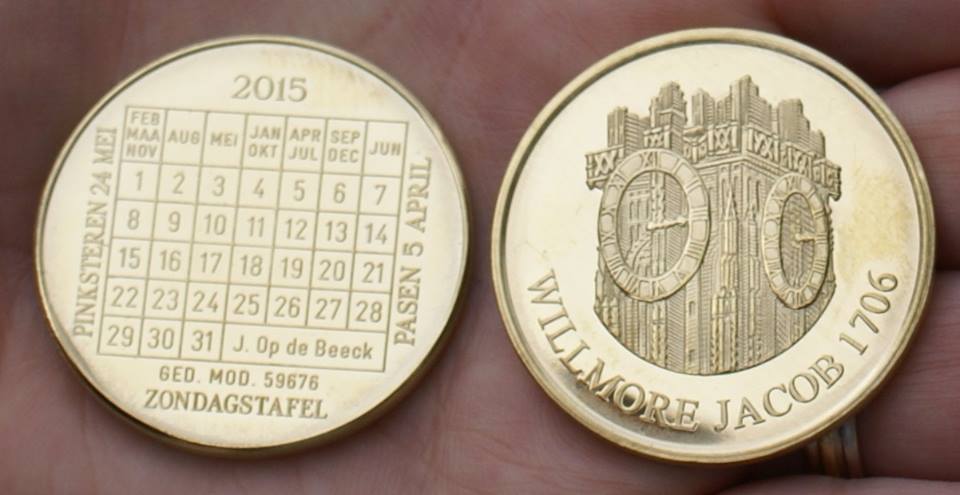Mint calendar
For years, the watchmaker's museum issued a calendar medal. This calendar medal was in the 18th century a typical mint calendar that was widely known. It was a simple calendar system that could be carried in your pocket. Unfortunately it was lost at the end of the 18th century. In 1983 at the opening of the museum in Mechelen, the system of the annual calendar medal was reinstated. 2019 is the last year the medal was effectively minted. Now the coin is only made in plastic token as entrance ticket to the museum.
How does it work
On the mint calendar you can read the date on one table instead of 12; i.e. one for each month. The system is also called the Sunday table and is hence based on Sundays. Let’s explain how it works. In the first row, you can find the months. The column below each month shows the Sundays in that particular month. You can see that in the year 2015 (= te year on the mint calendar in the example below): 1, 8, 15 and 22 February are Sundays. When you are looking for another date, all you have to do is count further using your finger.
Maybe an example will make things more clear. Let’s say you want to know what kind of weekday is May 9.
You look in the column below May and spot the two nearest Sundays.
That is the 3rd and the 10th. Now there are two options: either you count forward from the 3rd on or you count backwards from the 10th.
In both cases, you will find that the 9th is a Saturday.
Another application of the mint calendar is to find out the current date.
Of course, you know the day of the week we are now.
Just look up the two closest Sundays in the current month and you will soon find the solution.
